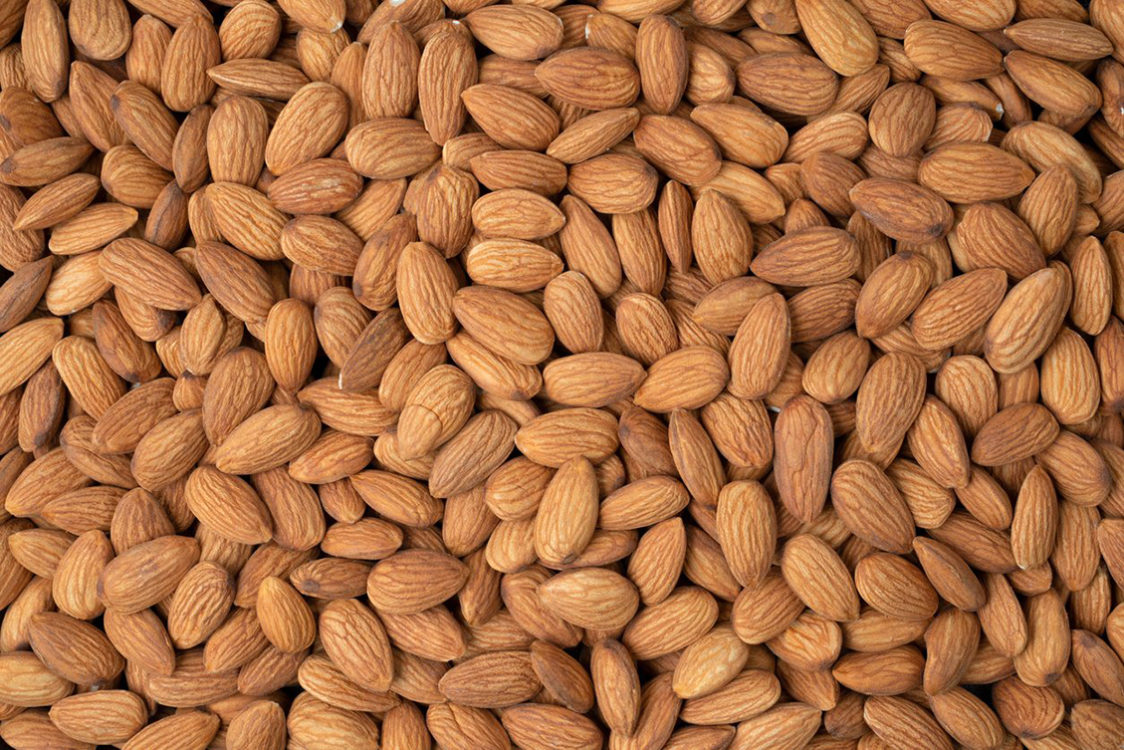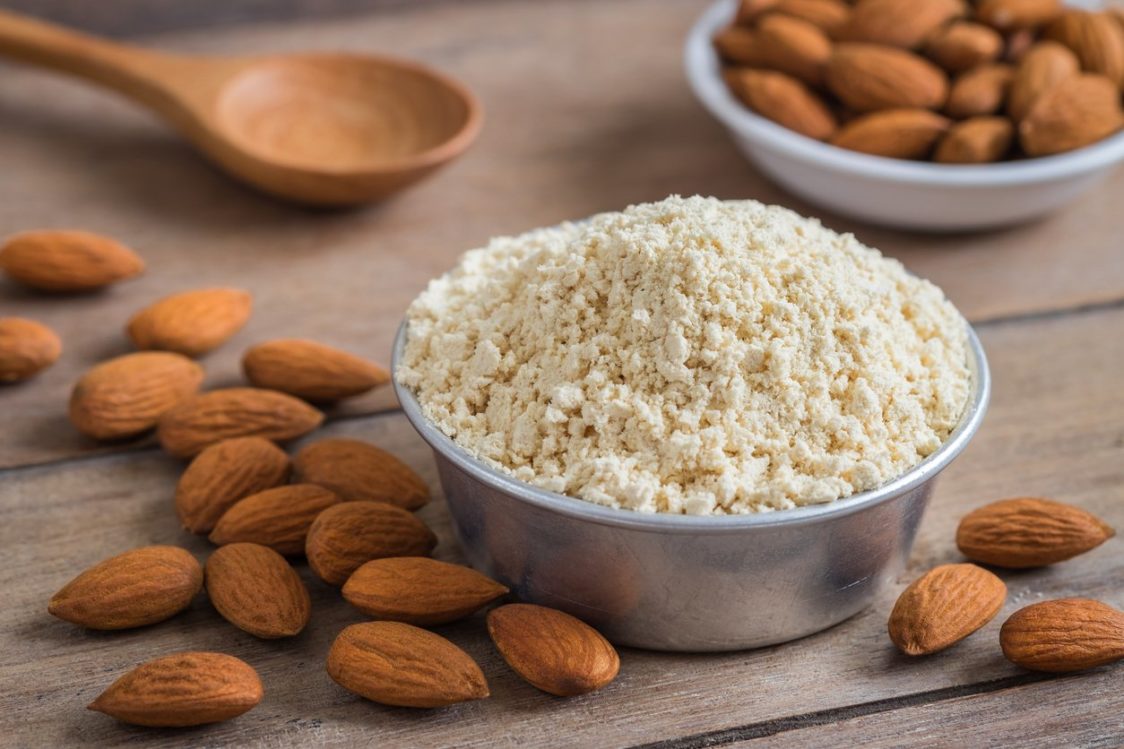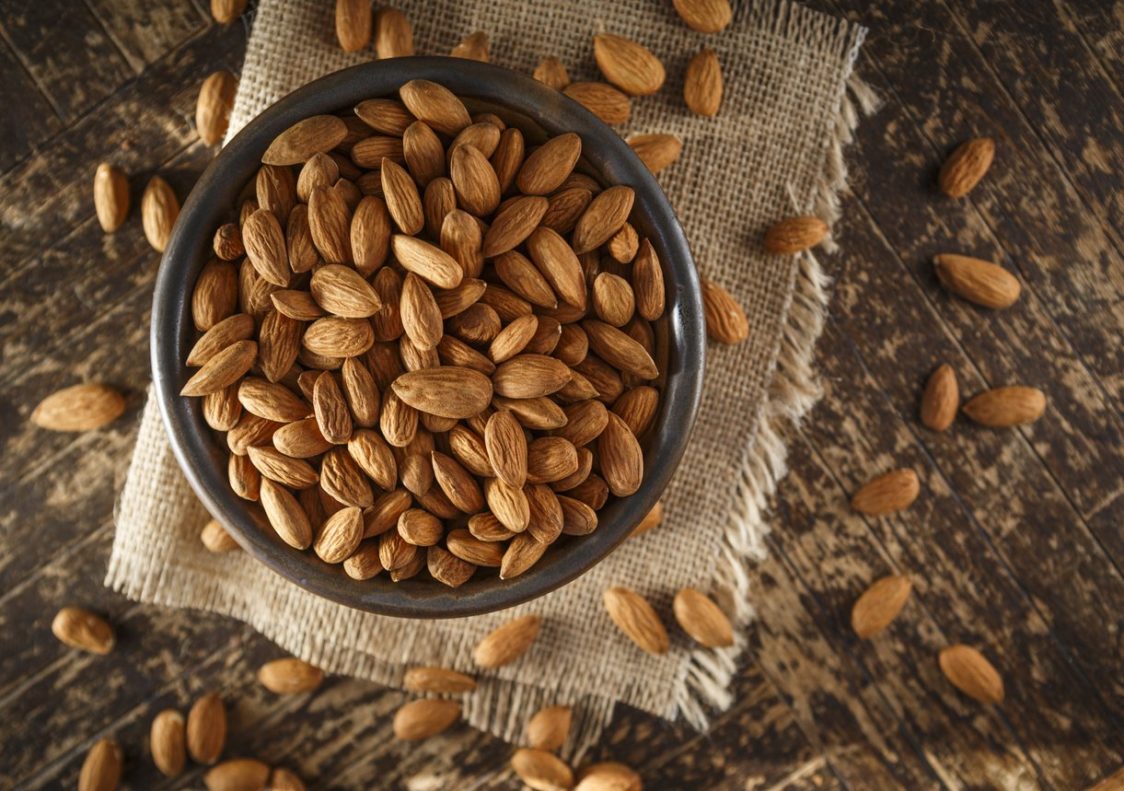Table of Contents
Occasional snacks between meals can be a healthy habit and a nutritious part of your day. Whether you are trying to lose weight, maintain your blood sugar, or simply get more natural nutrients throughout the day, almonds can help you deliver exactly the substances your body needs. At home, at work or on the road, almonds are everywhere a convenient form of snack that provides healthy and powerful nutrients.
Almonds, which are considered nuts, are essentially seeds of almond fruit, a beautiful, medium-sized tree that has fragrant pink and white flowers. Like the peach, cherry, or apricot, the almond tree gives hard-seeded fruit. Almond fruit seed is what we call a nut. The almonds are white in colour, wrapped in a light brown sheath and enclosed in a hard shell.
They are divided into two categories: sweet and bitter. Sweet are those that are eaten daily. They are oval in shape, mostly with a more elastic texture and great buttery taste. They can be found either in the shell or cleaned. Bitters are used to produce almond oil, which is used to flavour foods and various liqueurs. Otherwise they are unusable because they naturally contain toxic substances such as hydrocyanic acid. These compounds are removed in the production of almond oil. [1]

Interesting facts about almonds:
- The Romans considered almonds to be a magic food that promotes fertility.
- There are more than 30 types of almonds.
- California in the United States produces 83% of world almond production, Australia 7%, Europe 5%, Iran, Turkey and Tunisia 1%. [2]
Almonds and their nutritional profile
Almonds have higher levels of dietary fibre, calcium, vitamin E, riboflavin and niacin than any other type of nut, says Jenny Heap, a registered almond dietitian in California. One average portion (approximately 23 almonds) provides 35% of the daily dose (DH) of vitamin E, 20% of magnesium and riboflavin, 8% of calcium and 6% of potassium. Like other nuts, almonds contain a relatively high amount of fat, about 15 grams per 30 g portion. Fortunately, about two thirds of these fats are beneficial to the heart. A 2005 study published in a nutrition magazine showed that almonds contain the most nutritional ingredients when consumed whole with a brown coat. [3]
Protein is a structural element of our muscles, skin and cartilage. But they also perform other metabolic functions, such as the transfer of oxygen to the blood, or act as a regulator of metabolic processes. For bodybuilders, protein is probably the most important source of muscle building. Fortunately, almonds contain a large amount of this vital macro-nutrient, which makes them a very useful supplement in athletes’ nutrition. [4]
You might be interested in these products:
Comparison of almonds with other nuts
Among nuts, almonds come second with the lowest calorie content per serving. One average portion (28g) contains 161 calories, 6g protein, 13.8g fat, 6g carbohydrates and up to 3.5g dietary fibre. Least calories contain cashew nuts, they will give you 155 calories, 5g of protein, 12g of fat, 9g of carbohydrates and 1 gram of fibre per serving. Peanuts – 168 calories, 8g protein, 15g fat, 4g carbohydrates and 2.6g fibre; walnuts – 183 calories, 4g protein, 18g fat, 4g carbohydrates, 2g fibre; hazelnuts – 176 calories, 4g protein, 17g fat, 5g carbohydrates and 3g fibre. [5]

Almonds and their benefits
Almonds have many health benefits, often used as a healthy solution to relieve constipation, respiratory disorders, cough, heart disease, anaemia, impotence and diabetes. They also help keep our hair, teeth and skin healthy.
Beneficial for the brain
Almonds are a source of many nutrients that help the development and health of the human brain. They contain two important nutrients for the brain: riboflavin and L-carnitine, which increase brain activity and create new nerve pathways, reducing Alzheimer’s disease. Studies have shown that almonds and almond oil are beneficial to the overall health and functioning of the nervous system. [6] Mothers often give their children almonds soaked in water. Two or three pieces of soaked almonds are a sufficient dose for small children. [7]
They regulate cholesterol
Regular consumption of almonds contributes to increasing the level of high density lipo proteins (HDL) and reducing low density lipo proteins (LDL). This balance is vital for healthy cholesterol and lowering LDL (bad cholesterol). [7]
Protection of bones
Almonds are a fantastic source of many vitamins and minerals, such as phosphorus. Phosphorus has a significant effect on the strength and resistance of bones, teeth and at the same time prevents the development of diseases related to aging, such as osteoporosis. [7]
They keep your heart healthy
Mono-unsaturated fats, proteins and potassium contained in almonds are a means for heart health. Vitamin E acts as an effective antioxidant and reduces the risk of heart disease, while the presence of magnesium in almonds can prevent heart attacks. Almonds help reduce the presence and effect of C-reactive protein, which causes inflammation of the artery. They are also an excellent source of folic acid. For this reason, they help reduce the level of homocysteine, which causes the accumulation of a fatty coating in the arteries. Almond skin contains flavonoids, which in combination with vitamin E form a strong shield against damage to the walls of the arteries. Research suggests that short-term enriched almond diet can improve vascular function in healthy men aged between 20 and 70 years. [8]

Strengthening the immune system
Almonds are a source of alkaline materials that strengthen the immune system, increase the ability to avert diseases and various health problems. Vitamin E seeks to eliminate all harmful free radicals in the body as they promote chronic diseases and can be dangerous to our organs. Antioxidants, such as vitamin E found in almonds, affect cancer and heart disease. Research has shown that people who ate higher levels of vitamin E are actually 30-40% less prone to heart disease. [7]
They moisturize the skin
Almond oil massages are often recommended for new-borns. Almond milk is also added to some types of soaps and cosmetics because it has many beneficial effects on the skin. [7]
They have anti-inflammatory effects
Many people think that the word fat has a negative meaning. In fact, some of the fatty acids are essential and can be very beneficial to overall health. The body cannot create its own fatty acids by itself, which is why we have to take them from food sources. Almonds contain two very important fatty acids, linoleic and linolenic acid. These fatty acids help reduce the risk of inflammation. [7]
Blood pressure regulation
The potassium and sodium found in the almonds help regulate blood pressure. [7]
Boosting energy
The presence of manganese, copper and riboflavin in almonds increases energy and speeds up metabolism. If you are on the road, a handful of almonds will give you enough energy during the day without overeating your calories and fat. [7]

Protection against cancer
Almonds improve the movement of food in the colon, preventing the build-up and subsequent development of colon cancer. [7]
Protection against diabetes
Almonds help reduce glucose and insulin levels after a meal. Diabetics often suffer from an excessively rapid rise in glucose levels after a large meal or a meal with an unexpectedly high sugar content. Almonds help control glucose uptake and processing, making the process simpler and safer. [7]
They help in losing weight
Unsweetened almond milk is often used for weight loss. The mono-unsaturated fats contained in the almonds give a sense of satisfaction after eating and prevent overeating. Studies suggest that a low-calorie, almond-rich diet is suitable for relieving the weight of an obese person. It has also been found that people who regularly consume almonds (at least twice a week) are more likely to maintain their ideal weight. Finally, dietary fibre contributes to a consistent stool, helping to reduce weight and overall health by eliminating toxic substances. [8]
They work to prevent constipation
Almonds are rich in dietary fibre, and like other high fibre foods, they help prevent constipation. It is very important to drink plenty of water to speed up the digestion process. 4 or 5 pieces of mandi contains enough fibre to make your stool regular. [7]

Risks associated with consuming almonds
As with other nuts (cashews, walnuts, para nuts), you may also be allergic to almonds. According to the American College of Allergy, Asthma and Immunology, the “allergic shock” is most often caused by nuts. Symptoms of almond allergy include abdominal pain, diarrhoea, difficulty swallowing, clogged nose or runny nose, nausea, itching and difficulty breathing. Whole nuts, nut products, including oils and butter can cause similar allergy symptoms.
Almonds are susceptible to aflatoxins – chemicals produced by fungi that can cause cancer. Almonds that are infested with mould are dangerous to eat. This mould appears in the form of grey and black fibres. According to world almond management, industry has programs and procedures to minimize aflatoxins.
In 2007, following almond-linked salmonellosis, the US Department of Agriculture decided to pasteurize all almonds. Since then, raw, untreated almonds grown in California are not available. Almonds referred to as “raw” are essentially pasteurized with steam or mixed with propylene oxide. [1]
Types of almonds
Almond varieties are divided into five classifications, based on different characteristics, such as size and shape. They are usually divided into the following three main groups: Nonpareil, California and Mission.
Nonpareil
The largest group of almonds are discoloured, the skin is removed. The thin outer shell and smooth core allow for easy processing.
California
This classification contains a number of varieties that are mainly used in industrial products. This type of almond has a wide range of shell hardness, core shape, skin colour and surface properties. As a result of being highly adaptable, they fit almost any almond processing.
Mission
These almonds have a hard shell and their cores are small and wide. The skin is usually darker than Nopareil and wrinkled, which increases salt and taste. [9]
An easy way to add almonds to your diet
- Try almond butter as a spread, just for a spoon or add it to healthy desserts
- Enhance your white yogurt by mixing chopped almonds and dried fruit.
- Healthy curry sauce with almond slices.
- Add a little almond butter to your breakfast drink to increase the taste and protein content.
- Almonds and apple make amazingly simple snacks to replenish energy while traveling.
- Make a delicious cold rice salad with almonds, fresh peas and currants
- Add the sliced almonds to the chicken salad. [1]

History of almonds
Almonds come from central and southwestern Asia, where they served as the main food for long journeys of nomadic tribes. Wild almond trees grew close to trade routes, such as the Silk Road, which connected central China and the Mediterranean. Easy access allowed the spread of wild almond groves.
Almost every ancient civilization used almonds. 4000 BC people cultivated almond trees, which also spread to the countries surrounding the Mediterranean. King Tut took a handful of almonds to his tomb in 1352 BC to feed him on his way to the afterlife. Persians and Arabs made almond milk and almond water, which they appreciated as a refreshing drink and as an ingredient in other foods.
The almonds gradually reached the Mediterranean, including France, Greece, Italy, Spain, Portugal, Morocco, Tunisia and Turkey. Throughout their history they have maintained religious, ethnic and social significance. In the Bible we find numerous references to almonds as an object of value and a symbol of hope. In India, almonds are considered healthy for the brain, while Chinese consider them as a symbol of lasting sadness and female beauty.
In 1840, Americans tried to grow almonds for the first time. The original idea was that if peaches that are genetically similar to almonds can grow in the southern states, then almonds could grow successfully there too, especially in states like Texas, New Mexico and Georgia. Growers found that late frosts and high humidity were not ideal conditions for almond trees. Ten years later, growing in Sacramento, Monterey and Los Angeles proved to be the best solution. This gave birth to a new industry for California farmers. Today, California is the world’s largest almond distributor. [10]

A handful of almonds, or approximately 23 pieces, is a great way to give your body long-lasting energy for the day. This perfect morning snack contains powerful nutrition and helps fill our diet between meals. Almonds are one of the highest food sources of magnesium (76mg), and important plant-based minerals such as calcium (75mg) and potassium (200mg). Naturally gluten-free almonds and almond products deliciously fill the nutrient gaps that are often neglected in today’s diet.
What is your opinion on almonds? Will they find a place in your diet? Let us know in the comments. If you liked the article, support it by sharing.
[1] WH Foods – Almonds – http://www.whfoods.com/genpage.php?tname=foodspice&dbid=20
[2] Jessie Szalay – Almonds: Nutrition & Health Benefits – http://www.livescience.com/51627-almonds-nutrition.html
[3] Laura Jeffers – How Almonds Can Improve Your Heart Health – https://health.clevelandclinic.org/2015/03/how-almonds-can-improve-your-heart-health/
[4] Nicholas Doukas – Are Almond Nuts Good for Bodybuilding? – http://www.livestrong.com/article/511127-are-almond-nuts-good-for-bodybuilding/
[5] Almond Board – Nutrient Comparison Chart For Tree Nuts – http://www.almonds.com/sites/default/files/content/Tree%20Nut%20Nutrient%20Comparison%20Chart%20Web%20File.pdf
[6] W. Sayorwan, N. Ruangrungsi, T. Piriyapunyporn, T. Hongratanaworakit,N. Kotchabhakdi, V. Siripornpanich – Effects of Inhaled Rosemary Oil on Subjective Feelings and Activities of the Nervous System – http://www.ncbi.nlm.nih.gov/pmc/articles/PMC3700080/
[7] Organic Facts – Health Benefits of Almonds – https://www.organicfacts.net/health-benefits/seed-and-nut/health-benefits-of-almonds.html
[8] WebMD Health News – Almonds May Help in Weight Loss – http://www.webmd.com/diet/20031107/almonds-may-help-in-weight-loss
[9] Almond Board – Almond Varieties and Classification – http://www.almondboard.com/FoodProfessionals_DEC/TechnicalInformation/Pages/TypesVarieties.aspx
[10] National Almond Day – History of Almonds – http://www.nationalalmondday.com/history-of-almonds.html

